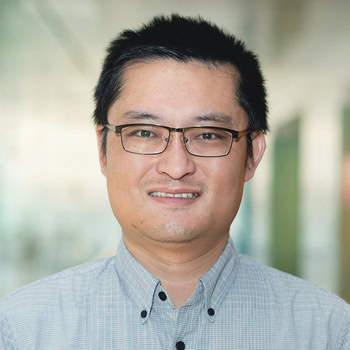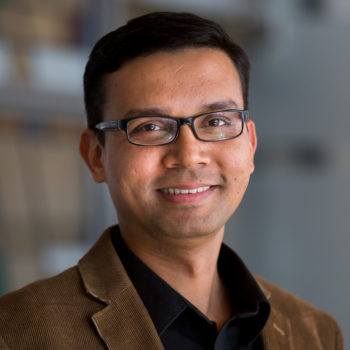
U-M quantum testbed enables remote experiments
The optical fibers connecting two quantum research labs at the University of Michigan mark the first piece of a local quantum network and remote user test facility.
Experts
Zheshen Zhang
Parag Deotare
Researchers and students can now remotely run new kinds of quantum experiments on campus at the University of Michigan, thanks to the establishment of a quantum testbed that links two labs with optical fibers. The ultimate aim is to provide broader access to the tools needed for quantum technology development and build a robust educational resource based on the experimental data.
Quantum researchers, who explore the behavior of particles and light at scales smaller than a single atom, often have to deal in theory because they lack the facilities and resources to fully test their predictions. For instance, entanglement—a phenomenon in which two particles become linked so that measuring one instantly changes the state of the other—may be tested over distances of miles at just a handful of facilities with restricted, in-person access. Lacking travel resources, many quantum researchers work within a single lab. This makes it hard to take advantage of entangled light that may be transferred and measured over long distances.
Video transcript
William: Traditionally, education in quantum mechanics is completed through theory and mathematical formalism. But today’s industry requires more familiarity with how quantum experiments and quantum resources actually behave in the lab.
Narrator: Accelerating investment into quantum science depends on real, hands-on experimentation—but access is often limited. At the University of Michigan, a new remotely-accessible quantum testbed lays the foundation for advancing tomorrow’s quantum technologies.
First, the Michigan researchers established a fiber link to communicate entangled photons between multiple labs across the University’s campus. This infrastructure can interconnect a variety of quantum platforms, such as those based on neutral atom qubits, trapped ion qubits, spin qubits, or superconducting qubits.
Zheshen: But what is unique about our testbed is that it is also a remote-accessible resource. Users across the country will be able to remotely access both the research and educational resources.
William: We are allowing immediate access to real experimental data to industry partners and other students to really enhance the transition to a quantum-enabled workforce.
Narrator: Cloud access allows users to remotely configure and run quantum experiments using actual laboratory hardware. Users can submit experimental parameters, access real-time or preprocessed data from quantum devices such as entangled photon sources, and retrieve results through a web-based interface.
The system also supports the development of interactive educational modules and research workflows, and enables remote monitoring, data analysis, and adjustment of experimental settings.
Zheshen: This will be proven a powerful tool to accelerate the technology transition from basic science to industry-grade applications, because the testbed will allow users to remotely fast-prototype quantum concepts, modules, and systems followed by larger-scale integration.
Narrator: As for what’s next, the researchers aim to interconnect additional quantum research facilities both at Michigan and other local universities, as well as connecting to local industry in creation of a larger-scale quantum network. By supporting remote research, hands-on education, and collaboration with industry, Michigan’s cloud-based quantum testbed forms a vital backbone for accelerating quantum innovation and development.
Now, an optical fiber link has been installed between the labs of Zheshen Zhang and Parag Deotare, two associate professors of electrical and computer engineering. The link allows them to use light to transfer encrypted or entangled information between their facilities in the Electrical Engineering and Computer Science Building on North Campus and Randall Laboratory on Central Campus, about three miles apart.
The transfer of information encoded in light through glass fibers isn’t new—you may even be using fiber Internet to read this story. But the transfer of quantum information (qubits) over these fibers could revolutionize communication, computing, scientific discovery, and more with its speed and privacy protection.
“You can think about this link as an extension of the current Internet, with telecommunication fibers transmitting optical signals, but now we have the new capability to distribute quantum states of light in addition to classical states of light,” said Zhang.
The research team has already run some basic experiments on the testbed and demonstrated that they can transport entangled light across the link.
“I’m looking forward to the opportunity to test real life quantum entanglement on multiple levels,” said Alexander McFarland, a PhD student in electrical and computer engineering, who incorporated the equipment in Deotare’s lab.
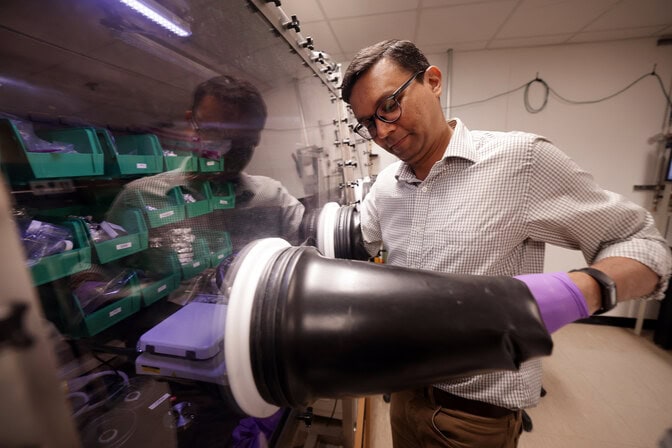
“We will have the opportunity to try for more complicated entanglement schemes, ones which involve more than two particles and can push the field of quantum cryptography farther,” he added.
The team has also developed a set of interactive demonstrations that allow researchers and students to learn quantum theory and then see how the theory plays out in real life with data pre-recorded on the testbed during actual experiments. Anyone can try them at qreal.cloud.
“What excites me most about this testbed is that it allows people to experience quantum physics firsthand. Instead of just learning about concepts like entanglement in theory, students and researchers can now explore real data from photons that are linked across campus. It makes the strange world of quantum mechanics much more tangible,” said Visuttha Manthamkarn, a PhD student in electrical and computer engineering, who connected the systems in Zhang’s lab.
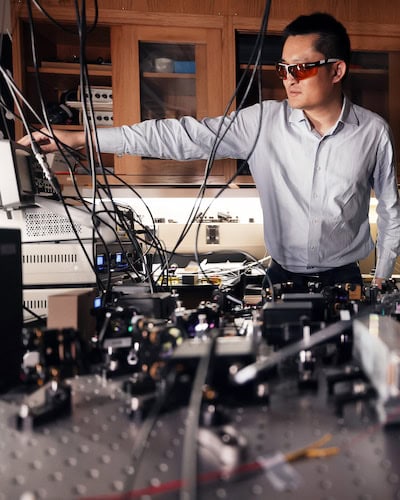
In addition to offering high-caliber educational resources for students, this remote access to experimental data promises a more collaborative future for quantum research.
Because specialized hardware is required to generate quantum states of light or perform other quantum experiments, access to quantum science and technology development has been restricted to people in very high-resource settings. This has created a barrier for the broader community—at universities or industry partners that lack these facilities—to apply their talents to advancing quantum technology. Zhang and Deotare aim to dismantle that obstacle for researchers.
“If we can create a portal that allows external users to remotely access the testbed resources, that greatly facilitates technology advancement and technology transfer,” said Zhang.
The collaboration between Zhang and Deotare is just the beginning. They aim to connect additional quantum research facilities at the University of Michigan, at other local universities, and in local industry, creating a larger-scale quantum network for all types of quantum experimentation.
“Part of this project is also education and workforce development,” said Deotare. “The distributed network that we’re creating would serve as excellent infrastructure for industry folks to visit and spend a couple of weeks trying to understand quantum experiments at a distributed network level and getting experience with an actual system.”
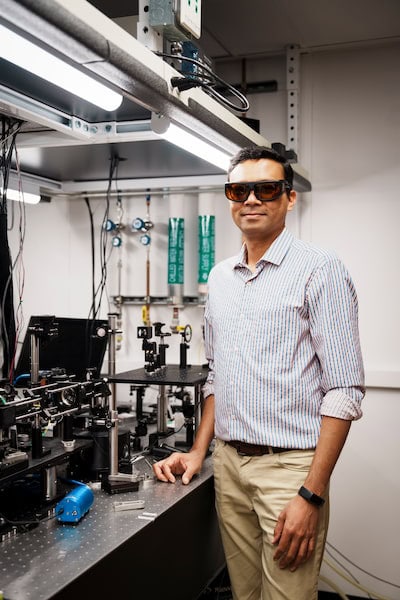
A local fiber infrastructure already exists in many places across Ann Arbor, facilitating the connections by Zhang and Deotare. They are collaborating with Merit Network, a local service provider that oversees telecommunication fiber links to local community colleges and industries, to expand their testbed network infrastructure.
“One of the greatest challenges we faced was figuring out how to combine extremely delicate quantum-optics hardware with the kind of robust cloud infrastructure that users expect to be stable and dependable,” said Kailu Zhou, a PhD student in electrical and computer engineering, who led the development of the cloud interface.
“We overcame this by carefully designing multiple layers of control, adding automated calibration and monitoring, and ensuring that timing and precision were maintained, so that the system could deliver both scientific accuracy and long-term reliability for a broad community of users,” he added.
Between the two labs, the network already has access to equipment that can create entanglement and detect it. They plan to incorporate additional labs that use a variety of physical quantum platforms, including neutral atoms, 2D materials, trapped ions, and superconducting qubits—many of which already exist at Michigan.
“Our testbed would serve as the backbone of interconnecting quantum systems, and, in turn, advance the development of different quantum systems,” added Zhang. “Our vision is that the testbed becomes a local engine for innovation and workforce development.”
The research and development of the testbed has been funded by the U-M College of Engineering and Office of the Vice President for Research. The educational aspects of the project have been supported by the National Science Foundation. Deotare is also an associate professor of physics.
